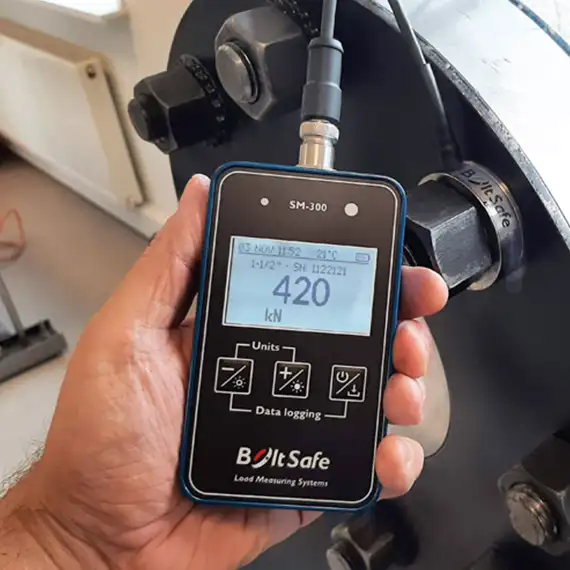The BoltSafe handheld reader is a portable device designed to read and store data from both CMS (Continuous Monitoring System) and PMS (Periodic Monitoring System) load cells. For CMS sensors, it connects directly via cable, displaying sensor values on its LCD screen. For PMS sensors, a probe is required; this probe powers the sensor and gathers data through a non-contact interface, connecting to the handheld reader by cable.
Specifications
Choice of units: kN and °C or lbf and °F
Storage capability: 43.000 measurements
Software: Freeware from our website (Windows 7/8/10/11/IoT)
Weight: 290 gr
Dimensions: 71 x 134 x 23 mm
Material: Aluminum
Stand-by time: 6+ months
Operating time 72+ hours


